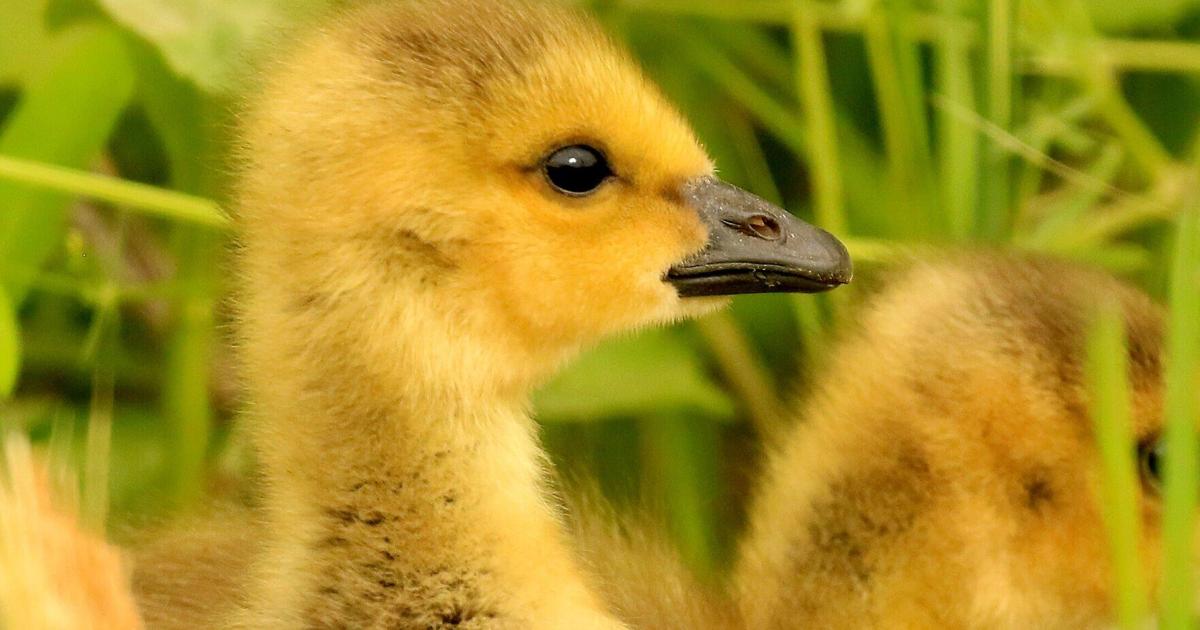[ad_1]
One of my photography goals this spring was to capture a mother goose on her nest the day the goslings were hatched. It was not an easy task as the nest had to be in a location that was close enough to the road for me to use my vehicle as a blind. This would also allow me to condition the goose to my presence and she would become comfortable with me nearby in the vehicle. The other hard part was that goslings leave the nest about 24 hours after hatching, making timing a critical factor.
Geese usually nest on an “island” in the water, such as a muskrat house, where it is easier to defend and protect from predators. They usually hatch out in 28 days and after one day abandon the nest, never to return.
I spotted three nests near the road, and they were pretty much free of vegetation that would obstruct a good, clear shot. Two of the nests hatched and the geese left before I could try to photograph them.
The third nest was not too far from my house, so I could check it more often. Sometimes I parked nearby for awhile just so the goose would get used to my presence and act naturally. After a time she recognized me and would actually fall asleep with her head up while I was there. The gander also quieted down and quit honking and threatening me whenever I stopped by.
I had just returned from some errands and drove down to check the nest. Bang! There were three cute little yellow goslings next to the mother goose on the nest.
The lighting conditions were not good — I had to shoot into the evening light, which switched from overcast to sun constantly — but this was my chance.
The goslings quickly scooted back under mom for warmth and to snooze. The gander stood guard next to the muskrat house upon which the nest was made, and neither parent showed any alarm at my close presence.
Knowing the goslings would periodically come out from underneath mom and romp around her, I settled in for the wait. My hope was to eventually catch one of them poking his head out from between her body and wing.
As I sat in the comfort of my car (no hard seat or cramped blind today!) I thought about some other good shots I got from this spot while preparing the parent geese for my appearance. One morning as I pulled up to the spot, a little green heron flushed from the cattails and landed in a nearby tree. He stayed long enough to allow me a few good images. The next day he did the same thing and I got better shots.
Another day while “training” the geese, I saw a yellow flash in a bushy red maple tree between the goose nest and me. It was a yellow warbler looking for food in the tree. He darted around, making it almost impossible to get a good shot, but patience won out, eventually.
Then, suddenly, another bird showed up and the yellow warbler chased it off. Lucky for me it came back and turned out to be a yellow-rumped warbler, a bird I had not previous seen. It too eventually gave me a few good shots.
Other birds such as turkey vultures, ospreys, red-winged blackbirds and great blue herons also gave me good shots from this spot.
The morning after I photographed the goslings, I returned to that spot hoping to catch them again before they left, but with better lighting. As it turns out, I did, and I got better shots.
There was one egg left that I could see when the mother goose got up. The three goslings got very active and wanted to explore and so she covered that last egg (which I think was not fertile) and they left the nest that was on the muskrat house.
The parents brought the goslings up to the road edge, by me, to let them pick at insects and dirt. I felt privileged to witness this with the parents acting like I was not there. That is what makes nature photography so worthwhile for those of us who enjoy it and its challenges.
• • •
The snapping turtles are finishing their egg laying process, which has been ongoing since the beginning of the month. I have never seen so many snapping turtles in the Alabama Swamps, and their average size is much bigger, too. I believe the state needs to adjust its management plan on these guys soon or our local waterfowl production is going to take a big hit. Snapping turtles take a lot of young waterfowl and even the adults.
[ad_2]
